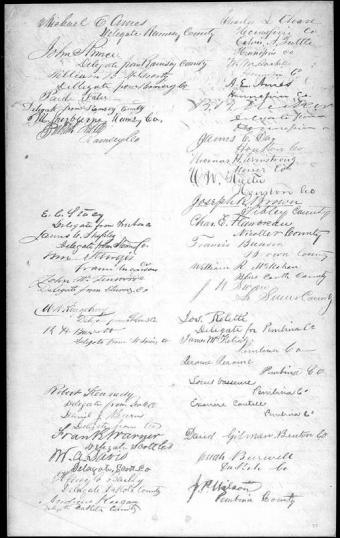From Minnesota's Constitutions. Minnesota Historical Society.
The United States Congress passed an enabling act on February 26, 1857, that permitted the voters of Minnesota Territory to decide if they wanted to become a state. Among other provisions, this act called for a constitutional convention to draft a constitution that would be the foundation for state government. At an election on June 1, 1857, Minnesota voters elected delegates to this constitutional convention. Between July 13 and August 29, this convention met in St. Paul to fulfill its obligations.
Intense rivalry between the convention's Democratic and Republican factions prevented the entire body of delegates from convening in one place and drafting a single constitution. Eventually, a conference committee of five members from each faction met to propose language that was designed to be acceptable to both bodies. On August 28, 1857, after bitter debate, both factions approved the conference committee's proposed language. However, the members of each faction refused to sign a single document that contained the signatures of the other faction's members. On August 29, 1857, fifty-three Republican members signed one document of 39 pages and fifty-one Democratic members signed one document of 37 pages.
Although the two documents were intended to be identical and to have the same meaning, the copyists, who worked feverishly through the night of August 28, 1857, to prepare the two documents for signature, created numerous differences. A detailed comparison of the two versions shows over 300 punctuation, grammatical, and wording differences. No substantive differences in meaning or interpretation are present.
Governor Alexander Ramsey's proclamation dated December 28, 1860, which ratifies the first three amendments to the state constitution, appears as part of the Republican version of the constitution.
See both transcripts.





